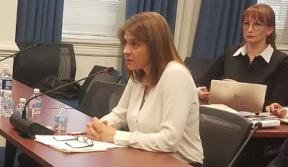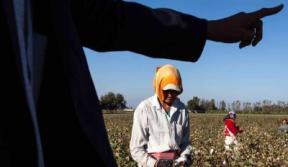
Today, as we commemorate World Day Against Child Labor, we are calling on policymakers, consumers, corporate leaders and individuals everywhere to redouble their commitment to the fight to end child labor. The global community has made great progress over the past twenty years, but recently that progress has slowed. In 2016 the International Labour Organization (ILO) reported there were still 152 million child laborers – which is exactly 152 million too many. Those are children who are losing out on their childhood, their education, and their future.
Twenty years ago, ILRF was deep in the thick of the Global March Against Child Labor. Our founding director, Pharis Harvey, joined the march in India and the over seven million people expressing solidarity for the Global March across five continents. Bama Athreya, my predecessor at ILRF, helped engineer the complicated logistics that come with such an endeavor. Bama, now a Labor and Employment Rights Specialist at USAID, recently posted a blog analyzing how far we’ve come in the past twenty years.
The Global March, led by 2014 Nobel Peace Prize Laureate and former ILRF board member, Kailash Satyarthi, did much more than raise awareness and mobilize activists. It helped drive significant policy change and the adoption of ILO Convention 182 on the Worst Forms of Child Labor. The March also set a positive example by making sure children, many recently freed from bonded child labor, were in the lead, demonstrating actively their interest and ability to organize for change. I met one of those former child laborers, Basu Rai, at the ILO annual meetings last week. Basu, pictured above as a child with Satyarthi, is now a full-time activist and he recalls having been freed from child labor in Nepal and participating in the Global March’s arrival at the ILO in Geneva in 1998. Basu recounts standing on desks at the ILO and chanting “No more tools for tiny hands. We want books. We want toys.” Basu is giving back to Nepali society as an organizer and changemaker, his commitment to ending child labor unwavering.
In 2012, the ILO reported a 22% decrease in child labor over the previous four years. But from 2012 through 2016, the percent decrease was less than 10%. What’s worse, the decline in hazardous child labor – the most dangerous and debilitating form of child labor – has slowed even more, decreasing by 26% between 2008 and 2012 and by only 15% between 2012 and 2016.
The fight to end child labor is a global goal that needs to be addressed country by country and industry by industry. Nearly every global supply chain is affected, which means everyone has a role to play in ending child labor. The ILRF-housed Cotton Campaign was instrumental in ending nationwide state-sponsored child labor in Uzbekistan’s cotton sector, but continued activism is needed to transform the industry into one with decent pay and working conditions. In Liberia’s rubber sector, local trade unions won collective bargaining rights, thanks to transnational support and pressure on Firestone. They then went on to negotiate better wages and working conditions, which significantly reduced child labor in the sector.
Additionally, ILRF’s long time campaign to end child labor in West Africa’s cocoa sector is finally gaining traction and we have recently seen a significant shift in the chocolate industry. For 18 years, ILRF campaigned for chocolate companies to help stop child labor by ensuring farmers’ access to a livable income, but the industry responded with an emphasis on improving farmers’ yields, with no tracking of their impact on net income and family livelihoods. In late 2016, however, the World Cocoa Foundation President, Rick Scobey, started acknowledging the need to address farmer incomes and cooperate more closely with NGOs.
Yet there are still many chocolate companies not fully onboard with a holistic approach to addressing both child labor and cocoa farmers’ poverty. Ironically, one of the most high end chocolate companies – Godiva – is lagging furthest behind in their commitments and urgently needs an added push to improve. Green America is hosting a petition to Godiva, supported by ILRF, which asks Godiva to ensure the farmers in their supply chain are lifted out of poverty and to establish effective child labor monitoring and remediation programs.
Signing the Green America petition is one small way readers can support the United Nations’ Sustainable Development Goal of ending child labor by 2025. It would be a major victory if one of the most popular luxury chocolate brands in the world committed to lifting cocoa farmers out of poverty and ending child labor. As Kailash Satyarthi said during his recent speech at the ILO, “These are human beings. These are all our children.”

